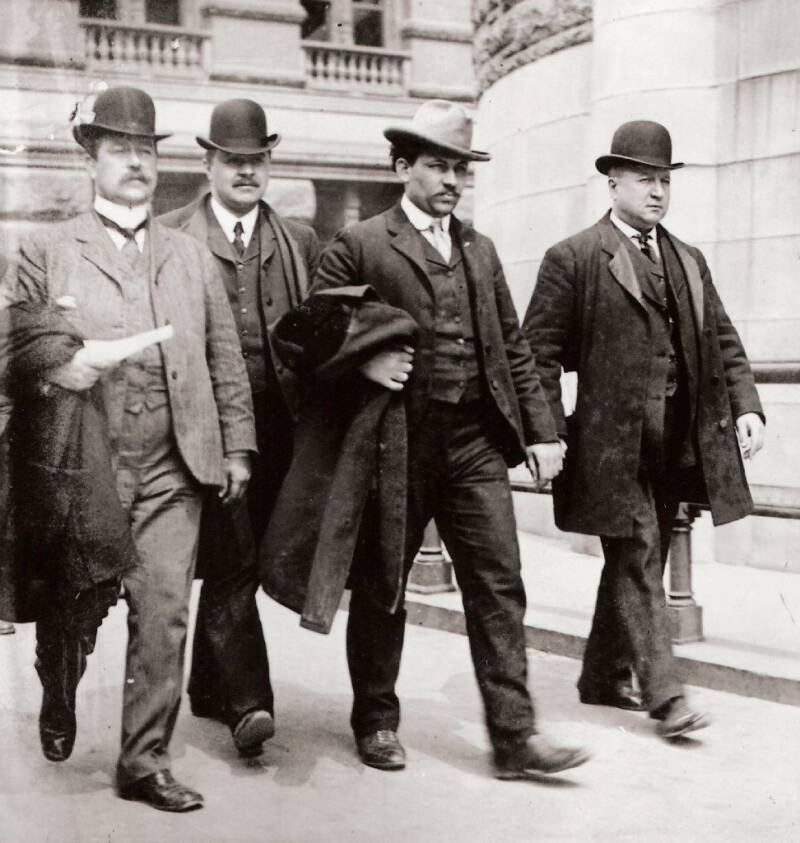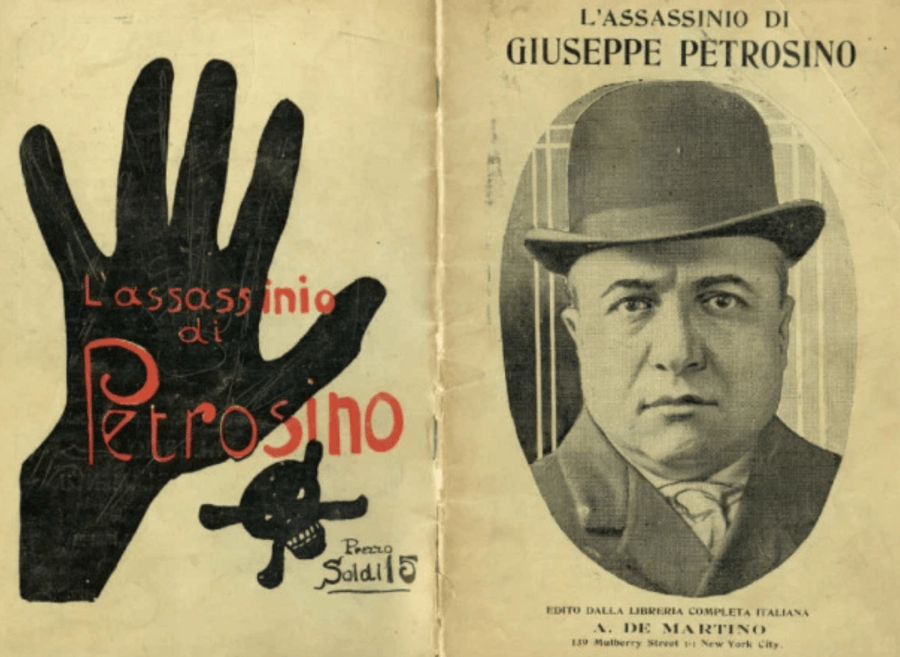The Italian Sherlock Holmes

Petrosino Family ArchiveFirst page of a death threat letter from The Black Hand against Joseph Petrosino.
The first major attempt to confront this new era of organized crime came at the turn of the 20th century.
In 1883, Joseph Petrosino became the first Italian-speaking officer in the mostly Irish New York Police Department. Able to communicate in many dialects of Italian, he had a talent for solving crimes that other cops simply could not — especially mob-related crimes.
By 1895, then-Police Commissioner Theodore Roosevelt promoted Petrosino to detective. And by 1909, he had risen to the rank of a lieutenant — mostly charged with investigating gang members who’d been convicted of crimes in their motherlands.
At that point, people began to call him “The Italian Sherlock Holmes.”
However, he wasn’t able to solve — or prevent — every crime. For instance, President William McKinley didn’t take Petrosino’s warnings of threats on his life seriously. And so in 1901, the president was assassinated by anarchist Leon Czolgosz in Buffalo, New York.
Disheartened by this security failure, Petrosino flew into action against gangs like The Black Hand and the Morello gang, including the investigation into the infamous 1903 Barrel Murder.
Petrosino revolutionized the police department. A work horse, Petrosino was recognized in 1909 for his efforts and was promoted to the head of the New York Police Department’s so-called “Italian Squad.”

Library of CongressJoseph Petrosino, far right, escorts Morello family hitman Tomaso Petto a.k.a. “Petto the Ox.” 1903.
Petrosino surmised that both The Black Hand and the Mafia received orders and assistance from overseas. With the support of the police, Petrosino set out for Sicily in 1909 to find suspects linked to the criminal underbelly.
Upon his arrival in Palermo, Petrosino garnered informants within the local Mafia. But his arrests never came. On March 12, 1909, while waiting for yet another “informant,” Petrosino was killed.
The day after Petrosino’s murder, the Italian Squad in New York received a letter, which claimed that The Black Hand had arranged the murder.
However, the veracity of this claim was never proven, and most believe that Petrosino was killed by none other than one of the men he was chasing: Don Vito Cascio Ferro. One of the most legendary Mafia members, Don Vito Cascio Ferro had established himself as a country aristocrat of sorts.
His allies, it was said, “awaited him at the entrance of his village, kissed his hands, and paid homage as if he were a king.” Whether Ferro personally killed Petrosino himself or via a hitman is up for debate.
Recently, Italian police secured their best evidence yet about what really happened to Petrosino in Palermo.
In a wiretapped telephone call from 2014, police heard the brother of notorious Italian gangster Paolo Pallezetto admit that it was he who carried out the assassination on Ferro’s orders.
Interestingly enough, Sicilian police had actually arrested Paolo Pallazetto after the 1909 murder, but he was later released for lack of evidence.

Petrosino Family ArchivesAn Italian chap book about Petrosino’s assassination, printed in New York.
At the time, the unsolved murder of a New York cultural figure galvanized anti-Italian sentiments within the city.





